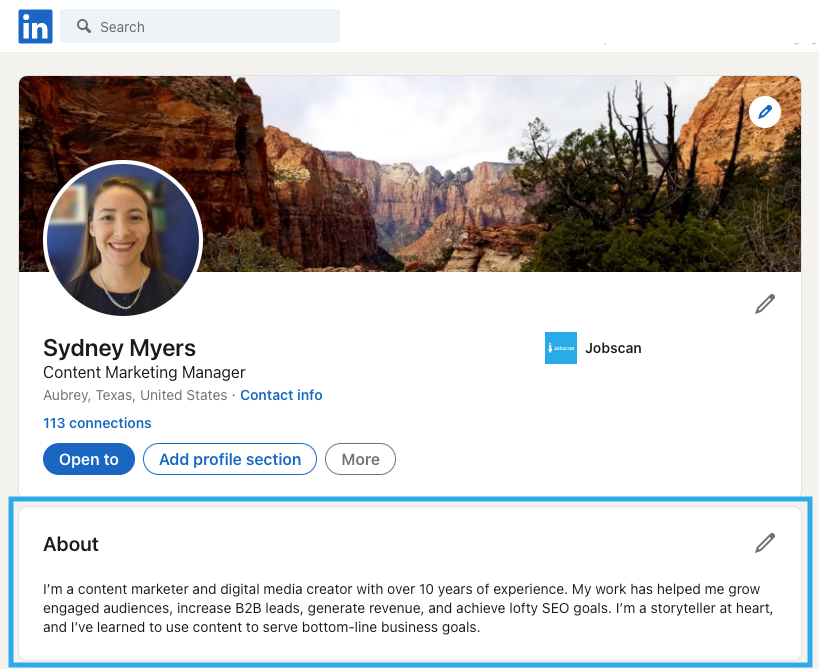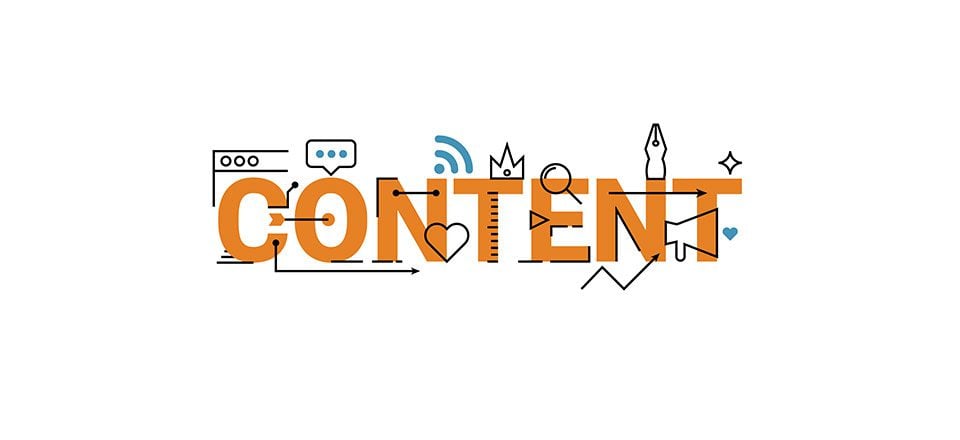Stexxa Nguyen
I am a Design Digital Marketing Search Engine OptimizeWhat I Do
My Project

I enjoy drawing, watching Anime, reading Manga and studying the influence of art and children, That’s the particular reason why I(Stexxa) decided to build the website https://jorz.art with the Artist of this project AlisaNguyen .
As a result of carefully studying the relevant record, I consider that the arts not only have an massive effect on the growth of children but It is also a foundation to support children in developing skills to recognize, distinguish, judge, and reduce negative symptoms of common diseases such as autism. . , ADHD, Obsessive Compulsive Disorder (OCD), Anxiety Disorder, … therefore with the main categories of the website, How to Draw and Coloring Pages will help children develop and improve the above problems. Therefore, the How to Draw and Coloring pages website will help children form and develop extreme skills as well as minimize causes mentioned earlier with the main categories that we have created. on this website. .
The first general category I would recommend is How to Draw, we will guide kids step-by-step through illustrated pictures and videos so they can sketch by just observing them on the platform we provide. Another category that we would like to mention is Coloring, Priority topics will be things they are exposed to and applied to their daily life such as: animals, plants, cartoon characters, fashion, vehicles, ..




Gamesnong – Download PC Game Full
Gamesnong is a free website that features the best PC Games, PC Mod games, PC Ful games and many more.
Gamesnong was created by stexxa or stexxa92.blogspot.com We are trying to make your browsing enjoyable and promote the featured products and their developers so that more people would support them.
The security and pleasurable browsing of our users is one of our top priorities. Gamesnong have fast page load times and more than 99% up time. The information on our website is monitored and updated daily.

All content on my website is provided by users and suggested to be posted on the website, on our groups at Facebook, Discord, so we will not be responsible for any content on the website.
We do not participate in shady schemes!

My Resume
Education Quality
BSc in Computer Science
University of DVI (2006 - 2010)The training provided by universities in order to prepare people to work in various sectors of the economy or areas of culture.
AS - Science & Information
SuperKing College (2001 - 2005)Higher education is tertiary education leading to award of an academic degree. Higher education, also called post-secondary education.
Secondary School Education
Kingstar Secondary School (1998 - 2000)Secondary education or post-primary education covers two phases on the International Standard Classification of Education scale.
Job Experience
Sr. Software Engineer
Google Out Tech - (2017 - Present)Google’s hiring process is an important part of our culture. Googlers care deeply about their teams and the people who make them up.
Web Developer & Trainer
Apple Developer Team - (2012 - 2016)A popular destination with a growing number of highly qualified homegrown graduates, it's true that securing a role in Malaysia isn't easy.
Front-end Developer
Nike - (2020 - 2011)The India economy has grown strongly over recent years, having transformed itself from a producer and innovation-based economy.
Design Skill
PHOTOSHOT
FIGMA
ADOBE XD.
ADOBE ILLUSTRATOR
DESIGN
SEO Skill
Research Keyword
Technical
Onpage
Offpage
Plan
Job Experience
Digital Marketing
(2017 - Present)Participate and directly organize many projects for companies in Vietnam and bring much success.
SEO - Freelancer
Fiverr - (2016 - Present)Directly deploy and build a system to promote keyword rankings to the top 1-3 successfully.
Design
Lolcoloring.com (2021 - Present)Directly design products on Lolcoloring website by using design tools and AI
Trainer Experience
NewTechShop
(2017 - 2018)Technology Shop
Web Developer and Instructor
SuperKing College (2010 - 2014)Higher education is tertiary education leading to award of an academic degree. Higher education, also called post-secondary education.
Design
Lolcoloring (2021 - Present)Company Experience
Personal Portfolio April Fools
University of DVI (1997 - 2001))The education should be very interactual. Ut tincidunt est ac dolor aliquam sodales. Phasellus sed mauris hendrerit, laoreet sem in, lobortis mauris hendrerit ante.
Examples Of Personal Portfolio
University of DVI (1997 - 2001))The education should be very interactual. Ut tincidunt est ac dolor aliquam sodales. Phasellus sed mauris hendrerit, laoreet sem in, lobortis mauris hendrerit ante.
Tips For Personal Portfolio
University of DVI (1997 - 2001))The education should be very interactual. Ut tincidunt est ac dolor aliquam sodales. Phasellus sed mauris hendrerit, laoreet sem in, lobortis mauris hendrerit ante.
Job Experience
Personal Portfolio April Fools
University of DVI (1997 - 2001))The education should be very interactual. Ut tincidunt est ac dolor aliquam sodales. Phasellus sed mauris hendrerit, laoreet sem in, lobortis mauris hendrerit ante.
Examples Of Personal Portfolio
University of DVI (1997 - 2001))The education should be very interactual. Ut tincidunt est ac dolor aliquam sodales. Phasellus sed mauris hendrerit, laoreet sem in, lobortis mauris hendrerit ante.
Tips For Personal Portfolio
University of DVI (1997 - 2001))The education should be very interactual. Ut tincidunt est ac dolor aliquam sodales. Phasellus sed mauris hendrerit, laoreet sem in, lobortis mauris hendrerit ante.
Awesome Clients
My Blog

Health Benefits of Coloring for Adults
Think spending hours coloring is only a childhood pastime? Think again!
The adult coloring book trend has spread nationwide, with some popping up on bestseller lists. With the countless health benefits of coloring for adults, it might be time to pull out the crayons, colored pencils, and markers!
REDUCE STRESS AND ANXIETY
Coloring has the ability to relax the fear center of your brain, the amygdala. It induces the same state as meditating by reducing the thoughts of a restless mind. This generates mindfulness and quietness, which allows your mind to get some rest after a long day at work.
IMPROVE MOTOR SKILLS AND VISION
The coloring goes beyond being a fun activity for relaxation. It requires the two hemispheres of the brain to communicate. While logic helps us stay inside the lines, choosing colors generates a creative thought process.
IMPROVE SLEEP
We know we get a better night’s sleep when avoiding engaging with electronics at night because exposure to the emitted light reduces your levels of the sleep hormone melatonin. Coloring is a relaxing and electronic-free bedtime ritual that won’t disturb your level of melatonin.
IMPROVE FOCUS
Coloring requires you to focus, but not so much that it’s stressful. It opens up your frontal lobe, which controls organizing and problem-solving, and allows you to put everything else aside and live in the moment, generating focus.
You don’t have to be an expert artist to color! If you’re looking for an uplifting way to unwind after a stressful day at work, coloring will surely do the trick. Pick something that you like and color it however you like!

Coloring Is The Beginning Of Creative Activity
A popular activity for everyone
Coloring activity is helpful for everyone, from children to adults. This activity is a simple yet powerful creativity that children and adults enjoy. It involves using different colors to fill in designs or images in a coloring book, on paper, or even on a digital screen. While coloring may seem like a primary activity, it can have a significant impact on a person’s mental health and creativity of each people. We get many benefits from participating in the coloring activity, such as reducing stress and anxiety, tapping into our creativity and imagination, improving fine motor skills and hand-eye coordination, and bringing people together.
Coloring activities help people reduce stress and anxiety
The first benefit of coloring is its ability to reduce stress and anxiety. When we choose images to color, our brains shift into a relaxed state, similar to meditation. Because this action requires us to focus on the task at hand, which helps to quiet the mind and reduce negative thoughts and feelings, that is very helpful for individuals who suffer from anxiety, depression, or other mental health conditions.
Moreover, fun coloring activities can make people a form of mindfulness meditation, which has been proven to reduce stress and anxiety. Users must focus on the coloring, and they can shift their attention away from worries and stressors, leading to a sense of calm and relaxation.
In addition, this coloring activity makes people increase dopamine production, a neurotransmitter associated with pleasure and reward. This can create a sense of happiness and satisfaction, further reducing stress and anxiety.
Overall, coloring task is an action to reduce stress and anxiety. It is accessible to people of all ages and can be done in various settings, making it a convenient and enjoyable activity to incorporate into daily life.

Coloring activities help people to tap into their creativity and imagination
That is right; coloring allows us to tap into our creativity and imagination. In joining this coloring activity, we users must select the different colors and experience additional shading and blending techniques; they will get unique and beautiful works of art. So, coloring is a great confidence booster, as it allows us to express ourselves in an enjoyable and rewarding way.
That is right; coloring allows us to tap into our creativity and imagination. In joining this coloring activity, we users must select the different colors and experience different shading and blending techniques, and they will get unique and beautiful works of art. So, coloring is a great confidence booster, as it allows us to express ourselves in an enjoyable and rewarding way.
Furthermore, coloring activity allows users to communicate their thoughts and emotions through color and design. Choosing colors that reflect our mood or personality can create a meaningful and personalized work of art. They can think it is a form of self-expression to show their idea.
In addition, coloring activities help users to stimulate the brain and enhance their cognitive function. They will improve our problem-solving skills, memory retention, and focus in coloring. This can be particularly beneficial for people who work in creative fields or who want to enhance their overall cognitive abilities. Outside of work, we should spend time on leisure activities, and coloring is one of the simple activities everyone can participate in. You can engage in drawing and coloring activities for free anywhere on our website.
Coloring is a simple yet effective way to tap into creativity and imagination. And it is suitable for people of all ages, so teachers and educators can also use this in the educational program for students.

Coloring activity improves fine motor skills and hand-eye coordination
The benefit of coloring I want to introduce to you is its ability to improve fine motor skills and hand-eye coordination. When users join in coloring activity, they must use coloring pencils or markers to strengthen the muscles in their hands and fingers. This is very helpful for your kids as it helps to prepare them for activities such as writing and drawing.
Coloring activity improves fine motor skills
Participating in coloring will increase the flexibility of the hands of users because they are using small, precise movements to fill in designs or images with color. This requires using our hand muscles and fine motor skills, which are essential to everyday life for both adults and children. If you regularly participate in coloring activities, hand manipulation will be more flexible, children will improve their pen or writing skills, and adults will also enhance their writing or use of computers.
Coloring activity improves hand-eye coordination
Users must practice small movements to fill in designs or images with color tableau when they color. These activities require us to coordinate the actions of our hands and eyes and improve hand-eye coordination.
In addition, this activity can also develop the fine motor skills that are necessary for good hand-eye coordination. Fine motor skills are the ability to control small movements of the hands and fingers, and they play a crucial role in developing hand-eye coordination. For children, coloring activity is a great chance to practice hand-eye coordination and fine motor skills in a fun and engaging way. They can take advantage of this activity after the hard-working hours to get the color activity focused; children need to have good hand-eye coordination skills, to create the perfect products, so they must frequently practice this coloring activity. So teachers and educators can take advantage of this activity in their school curriculum.
Conclusion
Coloring is an excellent ac to begin the creative activity. This activity can help users show their coloring skills and be helpful in life. More coloring is suitable for people of all ages. They can enjoy this activity daily to improve their quality of life because it can help them reduce stress, tap concentration, strengthen their imagination, etc. I also hope you enjoy coloring and drawing on our website.

Techniques And Tricks In Coloring Activities
Getting a nice picture in coloring activities
Coloring is a popular leisure activity these days, and it is an activity that is suitable for everyone. Both children and adults can participate. Coloring pages has many benefits, such as reducing stress, increasing concentration, improving motor skills and hand-eye coordination, increasing communication, and more. To enjoy coloring activities will have tips for making participating in this activity more effective. You can profit from some tips in coloring activities, such as creating beautiful and unique art products such as color blending, layering, burnishing, highlighting, stippling, experimenting with different coloring tools, and practicing color theory.
Use color blending For technique in coloring
Color blending is a technique used in coloring to create new colors by mixing two or more different colors. Today, there are other ways to blend colors, but one of the most common techniques is to use overlapping colors to create depth and richness.
Color blending is a technique used in coloring to create new colors by mixing two or more different colors. Today, there are other ways to blend colors, but one of the most common techniques is to use overlapping colors to create depth and richness.
You need to follow some steps to use color blending in coloring activities:
Choose the colors you want to blend: You must select two or more colors that you want to blend. In this case, you might choose blue and green to create a blend of turquoise.
Start with a light color: You begin with the weaker two colors, applying it evenly over the area you want to color. Use light pressure when coloring so that you can add more layers later.
Add a second layer of the first color: After applying the first layer of the light color, add a second layer to deepen the color. Using light pressure, you can apply the second layer in the same direction as the first.
Apply the second color: Apply the second color over the top of the first color, using light pressure. Start with a light layer and add more until you achieve the desired intensity.
Blend the colors: Once you have added the second color, blend the colors by applying a layer of the first color over the top of the second color. Use light pressure to blend the colors, taking care not to press too hard, or you might end up smudging the colors.
Add more layers if needed: If you want to deepen the colors further, add more layers of each color until you achieve the desired intensity.
Finish with a blending tool: Finally, finish blending the colors with a blending tool, such as a pencil or blender marker. The device can smooth out harsh lines or edges between the colors, creating a seamless blend.

Use the layering technique in coloring
Layering is a technique used in coloring to build up color and create depth and texture for images you want to make coloring. The idea is to apply multiple layers of the same or different colors to create a more vibrant look. To perform this technique well, you must use some tips as follows:
Choose your colors: You will select the colors you want for your project. Choose similar shades for a more subtle effect or contrasting colors for a more dramatic effect.
Start with light color: You will begin coloring with a golden color, using a soft hand to avoid making too strong a mark. You can always add more layers later to increase the color intensity.
Apply multiple layers: You will add more layers of the same or different colors, increasing the color intensity and depth. You will use a light touch and let each layer dry before adding the next one. This will prevent the colors from smudging and blending.
Vary your strokes: You will use different strokes and techniques to create texture and interest. You can create other effects by using small circles, dots, or crosshatching.
Use the burnishing technique in coloring
You know that the burnishing technique in coloring creates a smooth, polished look with a waxy or glossy finish. It involves applying multiple layers of color and then using a blending tool to press the wax or pigment into the paper, creating a polished and professional look. To use this technique in coloring, you must use some ways such as pressing firmly, using a burnishing tool, and finishing with highlights and shadows.
Pressing firmly In coloring technique
After applying several layers of color, you will use a blending tool to press the color into the paper. You can take a blending pencil, a blending brush, or a blending stump. Press firmly and move the tool in small, circular motions to blend the colors and create a smooth, polished look. With this technique, you will get the beautiful pictures you want because you will have a method of choosing colors and mixing colors to match the image. This technique is not for beginners to learn to draw, so if you are a newbie or simply learning to draw for fun, you don’t need to use this technique; you need to use the coloring method. Simple for your art products.
Using a burnishing tool in coloring
It would help if you used a burnishing tool to further smooth and polish the surface after mixing colors. A burnishing tool is a complex, smooth object such as a bone folder, a credit card, or a spoon. You get the burnishing tool over the colored area and apply firm pressure while moving the device in small, circular motions. This will press the wax or pigment into the paper, creating a smooth and polished finish. This technique makes your painting look glossy and beautiful. You can apply this technique in drawing and make coloring for coloring pages drawing tips. This technique is relatively tricky, requiring users to have much coloring experience.

Finishing with highlights and shadows technique in coloring
You use a white pencil or gel pen for highlights and a darker shade for shadows in the finishing with highlights and shadows. You can add highlights and shadows to give your artwork more depth and dimension after burnishing your colored area. If you use highlights and shadows in coloring, you will easily accomplish the task of color in drawing and coloring.
Hopefully, with the simple techniques introduced in this article, you will enjoy the drawing and coloring activity. On our website, we provide coloring pages and drawing guides for free. I hope you like these products and participate in these activities with your fun time.

Why Keyword Analysis Is Crucial For Your Seo Strategy
Have you ever wondered why keyword analysis is so important for SEO? If so, then you’re not alone. Many people struggle to understand why they should be devoting so much time and energy towards analyzing keywords. In this article, we’ll provide an in-depth look at the reasons why keyword analysis is crucial for your SEO strategy.
Search engine optimization (SEO) is a key element of any successful online marketing plan. It helps ensure that your website will show up in search results when potential customers are looking for services related to yours. Keyword analysis plays a vital role in SEO because it helps you determine which words and phrases you should use on your website pages to get the best possible search rankings.
Through careful research and analysis, keyword analysis can give you insight into what terms people are using when searching for products or services like yours. By understanding these terms, you’ll be able to create content that meets the needs of your target audience and helps draw more visitors to your website. Ready to learn more about how keyword analysis can help boost your digital presence? Read on!
Definition Of Keyword Analysis
Keyword analysis is an important part of SEO (search engine optimization) strategies. It involves researching, analyzing and selecting the right keywords to target in web content so that it can be properly indexed and ranked by search engines. Keywords are the words or phrases people use when searching for information on the web. By understanding which terms are being searched for, businesses can create content that contains those terms and attract more visitors to their website.
The process of keyword analysis begins with identifying relevant topics related to a business’s offerings. After deciding on a topic, research should be done to determine what keywords are frequently used in searches related to the topic. Online tools such as Google AdWords Keyword Planner can provide helpful data about popular keywords related to a specific topic. This data can then be used to determine which words or phrases should be included in the web content and optimized for search engines.
Once the right keywords have been identified, they need to be strategically placed throughout the web content. This means including them in titles, meta descriptions, headings and body text while still making sure the content remains readable and engaging for visitors. The goal is to create content that is both optimized for search engines but also interesting enough for readers so they will stay on your website longer and explore more pages.
In addition, keyword analysis should also be done regularly since search trends often change over time. Keeping an eye on relevant topics and popular keywords related to them allows you to stay ahead of competitors by creating content that targets current trends instead of outdated ones.
Why It Is Important For Seo

Now that you understand what keyword analysis is, it’s time to discuss why it is important for SEO. Keyword analysis is a crucial part of any SEO strategy. It can help you determine which keywords to target in order to optimize your website and content for search engines. By understanding the search phrases used by your target audience, you can create content that will rank higher in search engine results pages (SERPs). This will result in more website traffic and ultimately more leads and sales.
In addition, keyword analysis can help you identify new opportunities for content creation. Knowing which words and phrases are popular with searchers can help you create topics that are better suited to their needs. This means you’ll be able to provide information that is useful and relevant to your target audience, which will increase engagement with your website.
On the other hand, if you don’t use keyword analysis as part of your SEO strategy, then it could be difficult to compete with other websites targeting the same keywords. Without this knowledge, it would be impossible to know what types of content should be created or how best to optimize existing content for maximum visibility on SERPs. As a result, your site’s rankings may suffer over time due to insufficient optimization efforts.
Keyword analysis is therefore an essential part of any successful SEO strategy. It provides valuable insights into how people are searching online so that businesses can tailor their content accordingly and maximize their chances of success in organic search results. By utilizing this data effectively, businesses can ensure they reach the right customers at the right time while also improving their overall performance in SERPs.
How To Collect Relevant Data

When it comes to SEO, keyword analysis is an essential part of your strategy. Gathering the right data can help you understand how users interact with your website and what keywords they’re likely to use when searching for content. Knowing this information can help you optimize your site for higher ranking and more visibility in search engine result pages (SERPs).
So, how do you go about collecting relevant data? The first step is to identify all of the keywords relevant to your website or business. Start by creating a list of words that relate to the content on your site, as well as related terms customers might type into a search engine. Once you have assembled a comprehensive list, you can then begin researching each keyword to determine its popularity, competition level, and potential value for SEO purposes.
Next, you need to conduct a competitive analysis of the websites ranking for these keywords. This will give you an idea of which sites are dominating the SERPs and allow you to benchmark against them. You should also look at their backlink profiles and content strategies so that you can identify any gaps in what they are doing compared to what you could be doing better.
Finally, analyze the performance of existing content published on your website using web analytics tools such as Google Analytics or HotJar. This will provide valuable insight into user engagement metrics like clicks and time spent on page—which can assist in determining which topics are resonating most with visitors and where there may be room for improvement.
Techniques For Analyzing Keywords

Now that you have collected relevant data to use in your SEO strategy, it is time to analyze the keywords. This process is crucial for optimizing your website and ensuring that it ranks higher on search engine results pages (SERPs).
The first step of analyzing keywords is identifying the terms that are relevant to your website. You should begin by researching the topics related to your business or service, as well as any other related topics. Consider not only industry-specific terms but also general ones. After doing this research, compile a list of potential keywords that could be used on your website.
Next, you must determine whether those keywords are being searched by users. To do this, look at keyword search volumes and trends from tools like Google Keyword Planner or SEMrush. This will help you identify which keywords are most popular among users and should thus be used in your SEO strategy. From here, you can narrow down the list of potential keywords even further and create a plan for incorporating them into your website’s content.
Finally, evaluate how competitive each keyword is in terms of SERP ranking. If there are already many websites ranking highly for a particular keyword, then it may be difficult for yours to compete against them successfully. Use tools like Moz or Ahrefs to assess the difficulty level of ranking high for certain keywords so you can decide which ones will be most effective for your SEO strategy.
Benefits Of Having An Optimized Strategy

Having an optimized SEO strategy can bring numerous benefits to your website. First and foremost, it helps you maximize the visibility of your website in search engine results pages (SERPs). By using keywords that are relevant to your target audience, you can ensure that more people are able to find your site. Additionally, keyword analysis can help you understand which topics or phrases are most popular with your intended audience – allowing you to tailor content accordingly.
Also, keyword analysis allows you to identify the best locations for placing keywords on your pages. This will allow search engines like Google and Bing to discover and index your site more easily. As a result, your webpages will rank higher in SERPs and be seen by more potential customers.
Moreover, having an optimized SEO strategy helps improve user experience. When users enter a query into a search engine, they expect to get relevant results quickly. If they don’t find what they need on the first page of results, they’ll often move on without ever exploring further down the list. By using keywords strategically throughout all of your webpages, you can make sure that users find their desired information as soon as possible.
In addition to improving visibility and user experience, an optimized SEO strategy can also help boost conversions for businesses looking to increase sales or leads from their website. By ensuring that pages contain relevant keywords for their target audience, businesses can encourage more people to click through and take action – leading to higher conversion rates over time.
Conclusion
In conclusion, keyword analysis is an important part of any SEO strategy. By researching and analyzing the keywords used in your industry, you can create a more effective plan for optimizing your website. This will help you to rank higher in search engine results pages and increase traffic to your site.
The data collected from keyword analysis helps you to understand which topics are most relevant to your target audience and how they search for information online. With the right techniques, such as grouping related keywords and understanding the competition level, you can make sure that you are targeting the right phrases for maximum visibility.
Overall, keyword analysis provides valuable insights that can help you create an effective SEO strategy and achieve better rankings in search engine results pages. By using this tool, you can ensure that your website reaches its full potential as it increases its visibility among potential customers.

Linkedin Optimization: How To Boost Your Professional Profile
Are you looking to make the most of your LinkedIn profile? As a LinkedIn optimization expert, I’m here to tell you that it’s easier than ever to boost your professional profile on this popular social media platform. With just a few simple tweaks, you can take your online presence to the next level and get noticed by potential employers.
In this article, I’ll show you how easy it is to optimize your profile so you can stand out from the crowd. From crafting an effective headline and summary statement, to optimizing keywords and leveraging connections – there are plenty of ways to ensure that your profile stands out in today’s competitive job market. Let’s dive right in!
Crafting An Effective Headline And Summary Statement
Having an effective headline and summary statement is key to boosting your professional profile on LinkedIn. Your headline should be targeted towards recruiters, summarizing the skills you possess that make you a desirable candidate. Keep it short and sweet – no more than two lines! Additionally, you want to showcase your accomplishments in the summary section of your profile, such as any awards or accolades you have received. Not only does this demonstrate success, but also proves that you are capable of meeting challenges and achieving desired results.
Your profile picture is just as important as the content in your bio; after all, it’s usually the first thing people will notice. It should not only reflect professionalism but also intrigue viewers enough to read further into what makes you unique. Choose a photo that demonstrates confidence and allows potential employers and colleagues to get a sense of who you are without having ever met you before. After selecting an appropriate image, ensure that it has been optimized for size so that viewers can clearly see your face and other features in the shot.
With these tips under your belt, making sure that your professional profile stands out from the rest is easier than ever! All that’s left now is for those recruiters to take notice – time to start spreading the word about yourself!

Optimizing Your Profile Picture
When it comes to optimizing your profile picture, choosing an appropriate one is key. Make sure it’s professional and current – you don’t want to be stuck with an outdated photo! Editing and enhancing your picture can also be beneficial, as it can make you stand out from the crowd. A few tweaks here and there can make a drastic difference to the overall look of your profile picture.
Choosing An Appropriate Profile Picture
When it comes to boosting your professional profile, one of the most important elements is choosing an appropriate profile picture. A great photo can help showcase your personality and make a good first impression on potential employers or business contacts. To ensure you look your best in this crucial piece of online real estate, here are some key tips for tailoring your wardrobe and posing that will give you the winning edge.
Start by selecting clothing that complements both your body type and personal style. Opt for neutral colors like navy blue, black, grey, tan or white; they’ll lend sophistication to any photograph while still allowing you to express yourself authentically. If possible, choose fabrics with texture such as linen or corduroy which adds depth and interest to photos. When it comes to posing, keep it natural! Showcase your confidence without appearing overly formal – think relaxed smiles and confident posture. Lastly, no matter what kind of shot you take (headshot vs full body) always remember: less is more. Simple but stylish outfits paired with genuine expressions create images that truly stand out from the crowd.
By following these few simple steps when taking a profile picture you’ll be able to present yourself in the best light possible so potential employers have all the information necessary to determine if you’re the right fit for their organization. In short – don’t underestimate the power of a polished photo!

Editing And Enhancing Your Profile Picture
Now that you’ve chosen the perfect profile picture, it’s time to take your professional branding a step further with some simple editing and enhancement techniques. Editing can be deceivingly tricky; done wrong, it can make you look artificial or even worse – untrustworthy.
To ensure that your image is as polished and genuine as possible, start by selecting subtle filters like sepia tones which will give your photo an extra boost of professionalism without looking too over-the-top.
Additionally, consider using software such as Adobe Photoshop for more detailed edits such as cropping out distracting elements in the background or brightening certain areas of the shot so the focus stays on you! When used correctly, these tools can help refine your overall presentation while still keeping true to who you really are – essential components for any successful networking strategy.
Ultimately, once you have finalized all necessary adjustments just remember: no matter how tempting it may seem, don’t go overboard with digital manipulation – trustworthiness should always remain paramount when branding yourself online.
Leveraging Connections
An important factor in boosting your professional profile is leverageing connections. Building networks and networking strategies can help you establish yourself as a leader in the field. The more connected you become, the better positioned you are to advance professionally.
It’s essential to get out there and develop relationships with other professionals. Start by attending industry events or joining relevant groups on LinkedIn that share your interests. Make time for coffee chats with people in the same line of work and explore potential collaborations. When connecting with new contacts, don’t forget to add value to the conversation by offering helpful advice or resources.
By leveraging existing connections and making new ones, you will expand your network and increase visibility among key players in your field. This will open doors to opportunities such as speaking engagements, expert interviews, consulting gigs, or even job offers! With an impressive network behind you, it becomes easier to make an impact and progress within your career path.
Now that we’ve looked at building networks – let’s move onto enhancing your experience section…

Enhancing Your Experience Section
Back in the day, when ink was spilled and paper was used to make resumes, networking etiquette dictated how you were dressed and what kind of handshake you gave. Nowadays, with the help of technology, building a professional profile on LinkedIn is easier than ever before.
Optimizing your experience section is key for any job seeker’s success. It allows potential employers to get an insight into your qualifications and work history quickly. Start by making sure that all information included is accurate and up-to-date. Make sure to list relevant skills such as computer programs or language proficiency – these can be added from preselected categories within the platform or manually inputted – as well as highlighting any awards received during employment. This will allow recruiters to have a better understanding of who you are as a professional.
Include only experiences which match the type of job you are applying for; this may include volunteer work or internships if applicable. Do not forget to add specific details about your accomplishments – they give prospective employers proof that you have contributed value at past jobs! With thoughtful editing and optimization of your experience section, it becomes easier for headhunters to spot talent amongst many other applicants vying for the same position.
By optimizing your skills and endorsements next, users can demonstrate their expertise while also increasing visibility among their network connections.
Optimizing Your Skills And Endorsements
The Experience section of your LinkedIn profile is essential for showcasing your professional history and successes, but optimizing the Skills and Endorsements sections can be just as important. There are two main ways to get the most out of these sections: networking strategies and building relationships.
Networking on LinkedIn should not only involve making connections with other professionals in your field or industry; it’s also a great way to reach out to recruiters at companies you’d like to work for. It’s all about relationship-building – if someone sees that you have a connection in common, they may be more likely to give you an opportunity. You can use features such as “People Also Viewed” or “Shared Connections” to open up doors into potential job opportunities.
Additionally, make sure to ask those who know your skills best (such as past colleagues or bosses) to endorse them on your profile! Not only does this bolster your credibility among employers, but endorsements from respected sources will help increase visibility when people search for certain keywords related to their roles. And don’t forget – while endorsements are great, nothing beats having written recommendations which showcase detailed accounts of why you’re so good at what you do!
Now that we’ve explored how optimizing both experience and skill sets can help boost our profiles, let’s look into writing compelling content that stands out from the crowd.

Writing Compelling Content
Engaging with the right people is essential for boosting your professional profile. Networking etiquette should be top of mind when crafting a strong personal brand on LinkedIn. Visualize yourself as an approachable and professional member in each interaction you have, while also ensuring that your branded messaging is consistent throughout all platforms.
Your content should reflect who you are as an individual or business. Aim to create compelling stories that draw attention and demonstrate why you’re valuable to potential employers or partners. Focus on industry-specific keywords and topics related to what you do best, so users can easily find relevant information about your services or skillset at a glance.
You can increase visibility by integrating these words into titles, tags, captions, and descriptions of posts. This will ensure that users searching for particular terms can quickly access content relevant to them. Additionally, use hashtags strategically to link conversations together and make it easier for interested parties to discover more about what you offer without having to search through multiple pages or profiles. Take the time to research trending phrases in order to maximize the reach of your posts and build connections with those looking for help from someone like yourself.

Integrating Keywords For Visibility
Optimizing your professional profile on LinkedIn is essential for increasing visibility and networking with the right contacts. To maximize success, it’s important to integrate keywords into each section of your profile that relate to your industry or field. This will help ensure you appear in search results when potential employers or recruiters are looking for candidates who meet their criteria.
When integrating keywords, be sure to use them sparingly throughout your profile so they don’t seem forced. Use language that accurately describes what you do and the type of position you’re targeting without sounding too jargon-heavy. Also include relevant terms like “networking tactics” and “targeted messaging” which can give a more focused impression of your expertise by showing how well versed you are in certain areas.
In addition to ensuring your words reflect what’s most important about your career path and experience, make sure the order in which these words appear makes sense as well. By optimizing key phrases within sections such as job titles, work experience descriptions, education background, etc., you’ll make it easier for interested parties to find out exactly what distinguishes you from other professionals in the same field. With this approach, employers will have an easier time recognizing why you’d be a great fit for any vacancies they may have available.

Conclusion
To wrap up, LinkedIn optimization is an important step in boosting your professional profile and increasing your visibility. Not only does it ensure that recruiters and employers find the right fit for their team, but also allows you to showcase yourself as a valuable asset. By leveraging connections, optimizing your skills and endorsements, writing compelling content, integrating keywords into your profile, crafting an effective headline and summary statement, and adding an appropriate picture of yourself – you can make sure that your presence stands out on LinkedIn! As a savvy LinkedIn optimization specialist, I’m here to help you make the best impression possible – so don’t hesitate to reach out!













